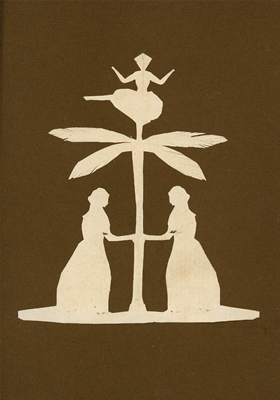The two Baronesses is a wide panoramic constructed novel with a description of the Danish peasant oppression and an optimistic belief that society is moving towards more humane conditions. The novel is part of a burgeoning romanticism in the 1820s until the 1850s, when the stories were down to earht and written so common people would identify with the characters and relate the story to their own lives. The narrative family relations were often characterized as idyllic and cozy on the outside, but they were on the inside closed and introverted.
Summary
Elisabeth enters the world in an abandoned farm by Funens southern seas. Her parents are traveling musicians. By coincidence, four young men seek shelter at the abandoned farm during their trip from Copenhagen to a mansion on Southern Funen. The men discover the battered, new mother with her newborn daughter, and when the mother dies, they decide to share the paternity and they baptize the girl "Students daughter". Elisabeth is then breastfed by one of the mansion’s young maids. The novel’s main plot follows Elisabeth, while a subplot follows the four men and the elderly baroness on the neighboring estate, Dorothea. The four men are barons, Holger and Herman, Count Frederick and pastor Moritz, who have all agreed to take care of Elisabeth. So she is left with Baroness Dorothea until Elisabeth violates one of the baroness’ rules and must re- settle in another place with the four men. Elisabeth’s life continues to be moving until the day when the Baroness’ grandson takes her to be his wife, and they move to the newly restored farm where she was born. Elisabeth becomes the new baroness, and she represents development and a present with abolition of monarchy and a new constitution, while the older Baroness, Dorothea, represents past serfdom and the romantic idea of ‘the good old days’.
Publication
The Two Baronesses was first published in English on September 28. 1848. The novel The Two Baronesses was first published in English by Richard Bentley in London, translated by Charles Beckwith Lohmeyer. It was a condition from foreign publishers that it (and other works) was not published in Danish first because it would then be open for anyone to translate and publish it. First released in Danish November 25. 1848. (Pictured above is a paper clip by Hans Christian Andersen – Copyright Odense City Museums – Reproduced with permission.)

